After Chandrayaan and Aditya, it’s LIGO: India’s moment under the science sun
As India makes its mark on the Moon and is set to get as close as it can to the Sun, the journey to unlock the deep mysteries of space has just begun. At Maharashtra’s Hingoli, an arid stretch of land is set to be the site for one most ambitious science programmes in the world – the LIGO observatory to study gravitational waves.
 A rendering of the LIGO India site in the state of Maharashtra. (LIGO website)
A rendering of the LIGO India site in the state of Maharashtra. (LIGO website)
In 2016, Rajudas Aade, a farmer, had a chance encounter with a few government officials who were visiting Hingoli, a district town about 560 km east of Mumbai. The “officials” were scientists scouting for land to build one of the most advanced scientific laboratories in the world, and wanted Aade to take them around. Aade understood little but instinctively knew they were talking about something “big” – one that had the potential to transform his life and that of many others in the remote and arid Marathwada region.
Today, Aade is one of the most enthusiastic supporters in Hingoli of the Laser Interferometer Gravitational Wave Observatory project or LIGO, a showcase science facility that will join an ongoing global project to probe the universe by detecting and studying gravitational waves.
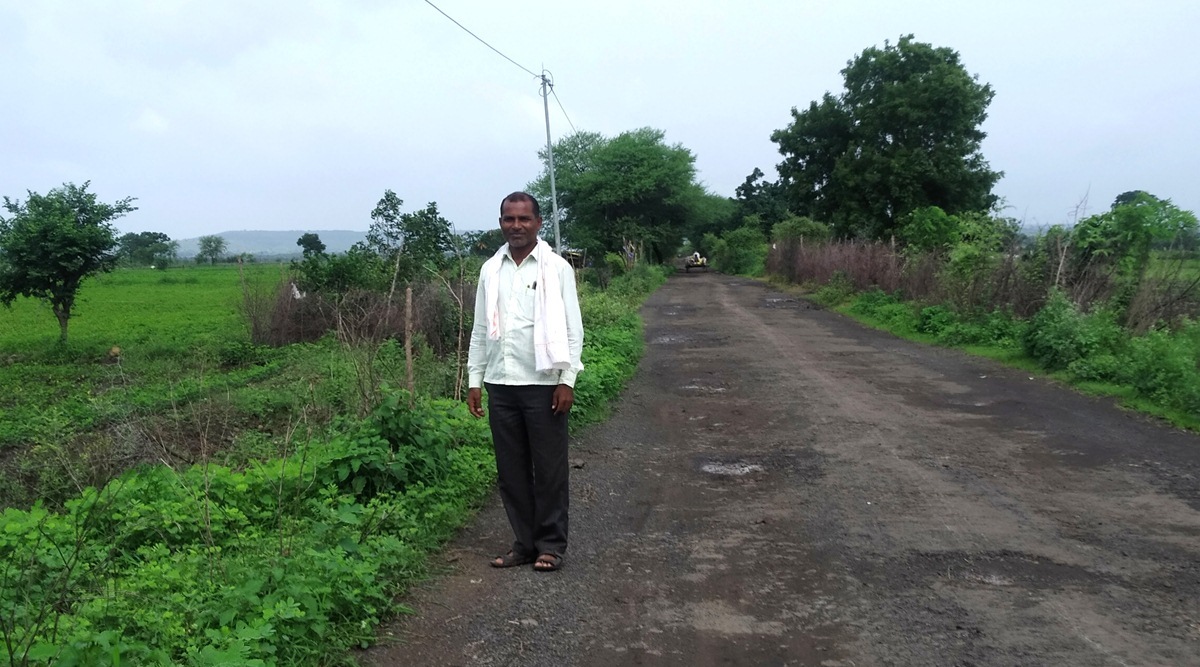 Rajudas Aade, a farmer from Dudhala village. (Express photo by Anjali Marar)
Rajudas Aade, a farmer from Dudhala village. (Express photo by Anjali Marar)
“The project will bring jobs. Hingoli chi olakh jagbharat hoil (Hingoli will become a world-renowned place),” says the 43-year-old resident of Hingoli’s Dudhala village, which will house the largest part of the observatory.
LIGO-India will be the third node of the LIGO Laboratory in the US, which has observatories in Hanford (Washington) and Livingston (Louisiana). Once completed, LIGO-India will join a global network of gravitational-wave observatories that includes Virgo in Italy and KAGRA in Japan.
“LIGO-India will be the first mega science project to be set up on Indian soil, which will enable Indian students and researchers to contribute to this emerging new field of gravitational wave astronomy, and the associated cutting-edge science and engineering. It will be one of the most prominent astronomical observatories in the world,” said Tarun Souradeep, director of the Raman Research Institute and the former LIGO-India Spokesperson (Science) under whom much of the work on identifying the site for the project was done.
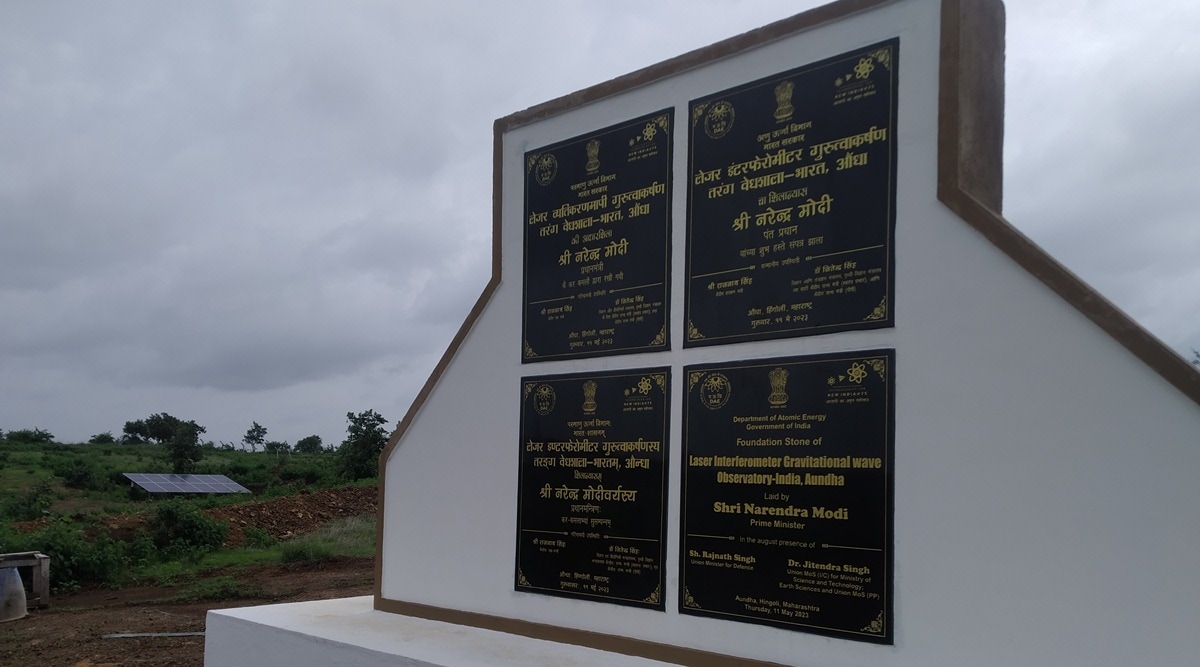 On May 11, Prime Minister Narendra Modi virtually inaugurated and announced the construction of LIGO-India at the cost of Rs. 2,600 crores. Seen here, the multilingual plaque near the Centre Station. (Express photo by Anjali Marar)
On May 11, Prime Minister Narendra Modi virtually inaugurated and announced the construction of LIGO-India at the cost of Rs. 2,600 crores. Seen here, the multilingual plaque near the Centre Station. (Express photo by Anjali Marar)
Why LIGO?
Albert Einstein had, with his Special Theory of Relativity, shown that space and time were not independent entities but had to be woven together as space-time. A decade later, in 1915, his General Theory of Relativity proposed that open space, or rather space-time, wasn’t something that was fixed, inert or transparent, but was affected by the presence, and movement, of celestial bodies like planets and stars.

Space curls around any object, he theorised, much in the same way a piece of foam does if a rubber ball was forced inside it. Around any large object, therefore, space-time is not flat, but heavily distorted. With his theory, Einstein explained the origin of the gravitational force, and also the reason for the perpetual, near-circular, motion of all heavenly bodies.
The theory also meant that when these celestial bodies move — and all of them are constantly moving — they would disturb the space-time around it, and these disturbances would travel outwards in space in the form of waves. Gravitational waves are these ripples in the fabric of space-time, caused by moving celestial objects, just like a moving boat creates ripples on the surface of water.
The propagation of gravitational waves has the effect of squeezing space-time. Everything contained in space-time also feels the squeeze. A spherical body like Earth, when squeezed from one side tends to elongate in the other side, just like a rubber ball would behave when squeezed. It is this behaviour that LIGO uses to detect gravitational waves.
The two LIGO facilities in the United States detected gravitational waves for the first time in September 2015, a feat that won the Nobel Prize in Physics two years later. But scientific research on gravitational waves did not end with their detection. It just began.
 Illustrative diagram showing what happens to a body like the Earth under the influence of Gravitational Waves. Source: IUCAA
Illustrative diagram showing what happens to a body like the Earth under the influence of Gravitational Waves. Source: IUCAA
Gravitational waves offer scientists a completely new window for looking at the universe. As of now, much of what we know about the universe is gleaned from the information contained in light and other electromagnetic radiation received from far-away planets or stars. But a large part of the universe is known to be completely ‘dark’, with no electromagnetic radiation coming from these areas. These areas remain invisible to human beings. Gravitational waves offer another way for scientists to ‘see’ these parts of the universe.
Within a week of the detection of gravitational waves being made public in February 2016, the Indian government decided to set up a LIGO facility in India. While the site in Hingoli – one of the four potential locations that were considered – was finalised in 2016, follow-up action was completed after following due procedures required for a megascience project of this scale. It was only in April this year that the final government approval — sanctioning an amount of Rs 2,600 crore – was granted.
In Hingoli, apart from the periodic visits of scientists, engineers, seismologists and surveyors, there has been little activity. With construction yet to begin, project officials say they had ample time to engage with the population in Hingoli, dispel their apprehensions, and explain the benefits of the observatory.

Despite a few initial misgivings about the project, unlike in the case of other scientific facilities, LIGO-India did not witness much opposition from residents of Hingoli.
There were early rumours, though, that the government planned to build a nuclear facility at the site. Also that the facility being built would belong to the US space agency, NASA.
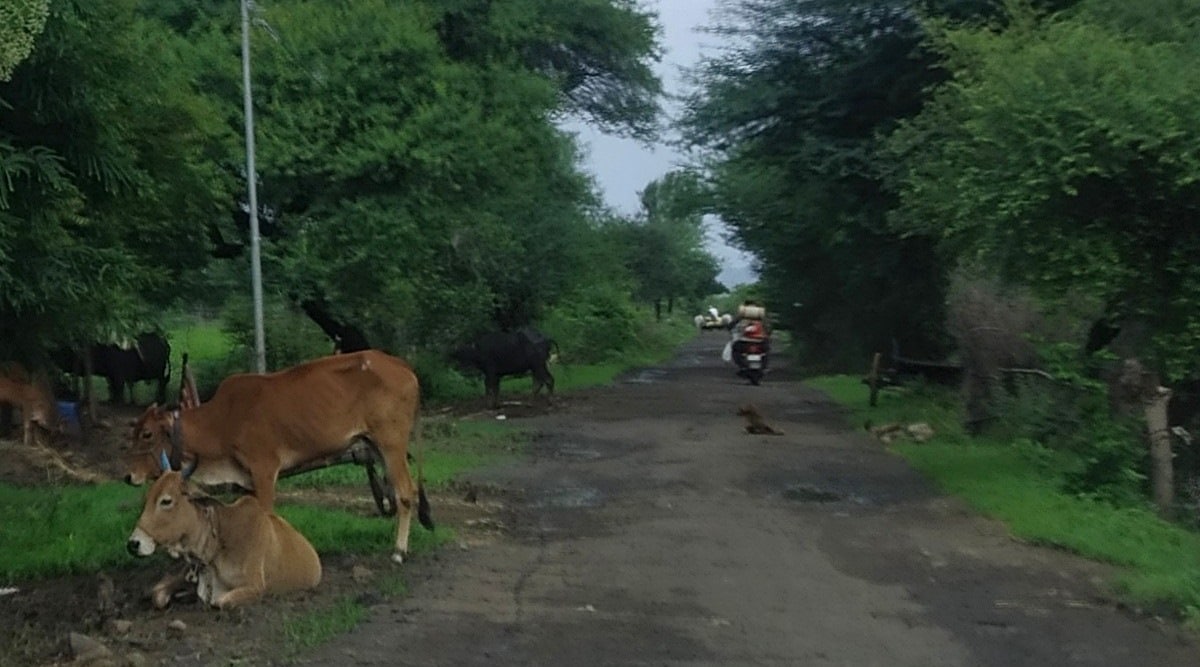 A 16-km stretch of kutcha road, flanked by fields of soybean and turmeric, leads to the LIGO-India site. (Express photo by Anjali Marar)
A 16-km stretch of kutcha road, flanked by fields of soybean and turmeric, leads to the LIGO-India site. (Express photo by Anjali Marar)
“We had to explain that it was not NASA or the US, but India that was building this facility. We even had to debunk myths about this being a manufacturing or production unit that would have resulted in degradation of the environment and pollution. Once these misgivings were cleared, the locals came on board,” says Rameshwar Bankar, a physics lecturer at a college in neighbouring Buldhana district, who was formerly associated with the project’s outreach team that was tasked with educating villagers on the observatory and its benefits.
“Explaining to the locals what gravitational waves are, and that LIGO-India will be a harmless and non-polluting facility were the biggest challenges we faced during the initial years,” he adds.
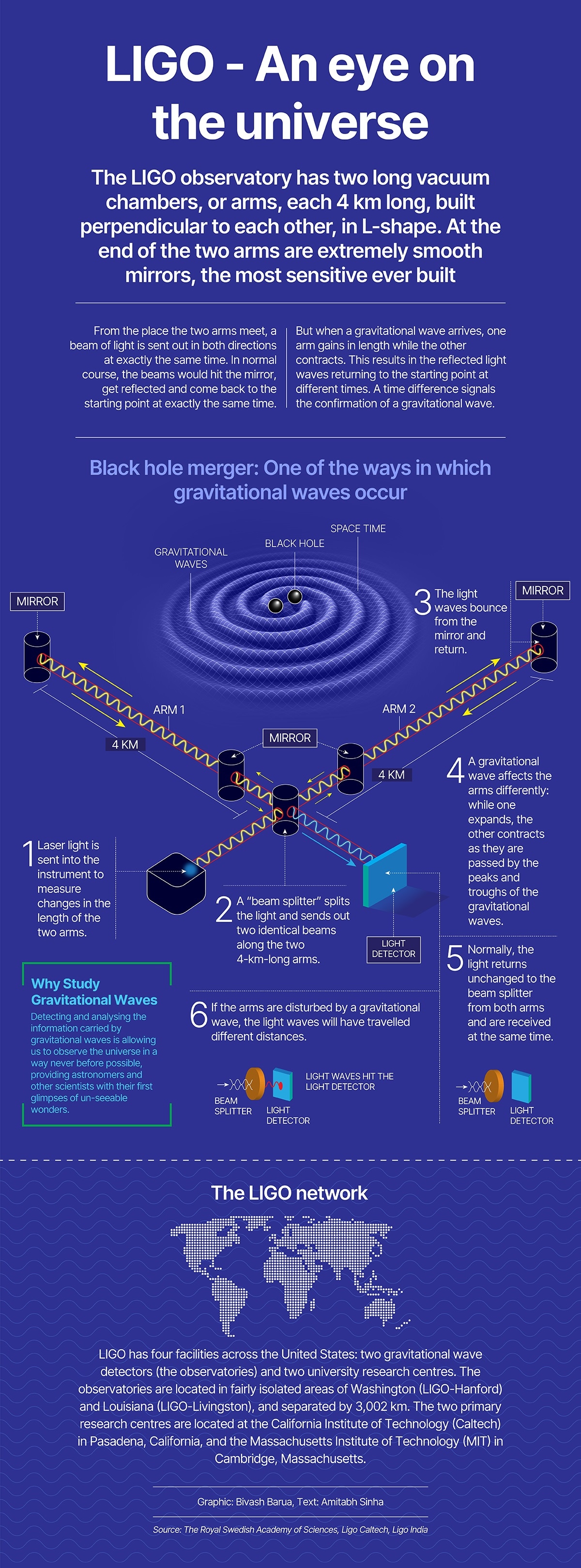 LIGO – An eye on the universe
LIGO – An eye on the universe
Aade, the farmer who helped look for land for the project, talks about other obstructions the project faced. “There was this farmer whose land, nearly half of his possession, had to be taken away for the project. He would let loose his dog every time the survey teams tried to enter his property. It was after much persuasion that he agreed to part with his land. In fact, after he was convinced of the project, he offered even the remaining half of his land,” says Aade.
“Even in Pune or Mumbai, not many people would have heard about Hingoli. But this project will make Hingoli famous not just in the country, but across the world,” he says.

In Hingoli and its villages, the 44 farmers who gave their land for the project were paid Rs 20 lakh per acre in compensation, nearly four times government rates.
The project team of scientists and officials from the Department of Atomic Energy, Pune-based Inter-University Centre for Astronomy and Astrophysics (IUCAA), Raja Ramanna Centre for Advanced Technology (RRCAT) in Indore, Institute for Plasma Research (IPR) in Gandhinagar, and a few other institutions, has set up an office at the location, which is about 25 km from Hingoli town.
An observatory with ‘long arms’
The site, a vast stretch of hillocks, is flanked by fields of turmeric and soybean, the two most common crops in this region. Once ready, the observatory will have a Corner Station and two 4-km long arms, essentially vacuum chambers, each with a diameter of 1.2 metres and in a piped casing that stretch out in an L-formation. The design is exactly the same as that of the two existing LIGO facilities in the United States.
At the end of the two vacuum chambers are placed highly-reflective mirrors. Light rays released into both the vacuum chambers hit the mirrors, get reflected and are captured back. In normal circumstances, the light rays in both the chambers would return simultaneously. But when a gravitational wave arrives, one of the chambers gets a little elongated, while the other one gets squished a bit. In this case, light rays do not return simultaneously and there is a phase difference. The presence of a phase difference marks the detection of a gravitational wave.
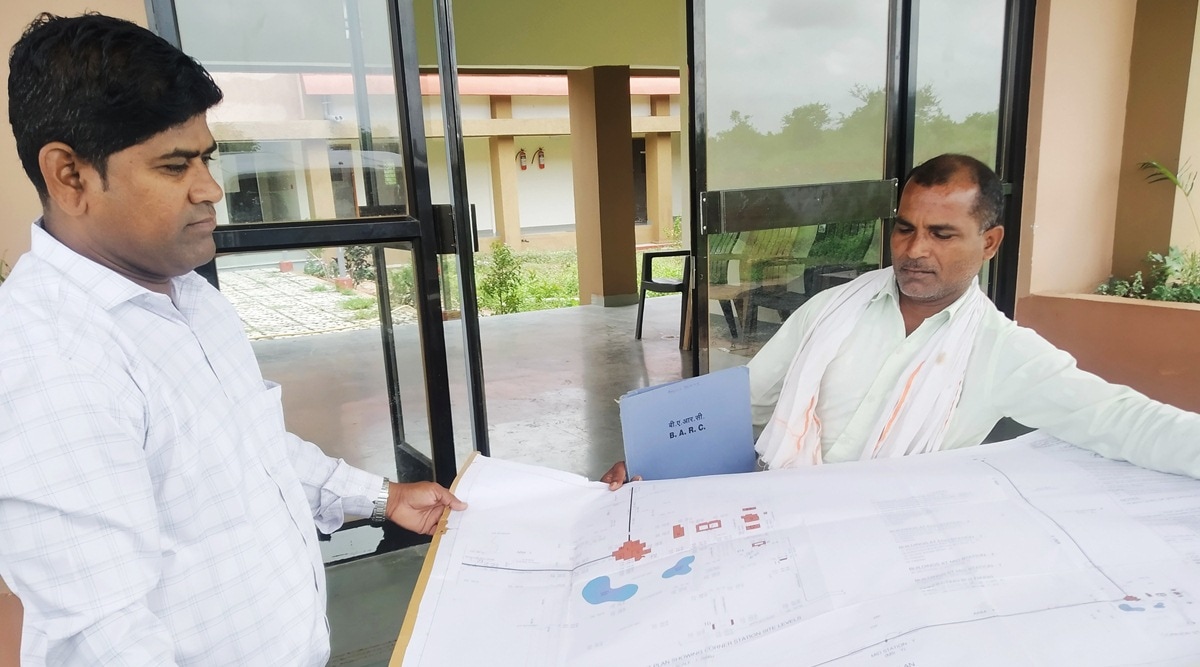 Sagar Bhuwad (left) of DCSEM explaining the LIGO-India plan layout. (Express photo by Anjali Marar)
Sagar Bhuwad (left) of DCSEM explaining the LIGO-India plan layout. (Express photo by Anjali Marar)
The long arms of the observatory mean that the facility, spread over 430 acres, touches as many as six villages. These villages are sparsely populated with most inhabitants engaged in farming on small holdings or rearing cattle and poultry. Many villagers migrate to other districts of Maharashtra during the sugarcane harvest season.
The area is part of the underdeveloped Marathwada region of Maharashtra. The closest health centre from the site is at least 25 km away. There are two primary schools, but no secondary schools or colleges in the vicinity.
A major part of the site is barren, rocky, non-cultivable – part of an unused chain of hillocks located at an elevation ranging between 428 and 452 metres above the mean sea level. Though recent rains have resulted in some areas here turning green, the site is usually desolate, dry and arid for most months of the year. Maximum temperatures in the summer months often hit 46 degrees Celsius. The average annual rainfall in Hingoli is 957.5 mm. A drought-prone district, Hingoli has suffered major drought situations during 1943, 1944, 1945, 1950, 1984 and 1985, according to the India Meteorological Department.
In the coming months, some parts of these hillocks will be levelled to facilitate the construction of the observatory, planned to be located at 450 metres above the mean sea level. Within the site, there is a foundation stone indicating the Corner Station and several small yellow pillars laid along the X and Y arms of the observatory. At the end of each of the two arms will be facilities to house the vacuum equipment, substation and chiller yard, an underground tank and a pump room. The area has been fenced and entry is cleared only with permits.
 The installed rain gauge at the automatic weather station (AWS) at the LIGO-India in Hingoli. (Express photo by Anjali Marar)
The installed rain gauge at the automatic weather station (AWS) at the LIGO-India in Hingoli. (Express photo by Anjali Marar)
“As a world-class facility, it is likely to attract researchers from abroad to work here. LIGO-India has the potential to make Hingoli a science city in the future. A science outreach centre called ‘Light & Gravity’ is also being planned at Hingoli as part of the LIGO-India project,” said Sanjit Mitra, senior faculty at IUCAA, who recently took over as LIGO-India spokesperson (Science).
A new-found interest in astronomy
The LIGO observatory is expected to commence operations by 2030 with an expected life of 30 years. The need for a third LIGO, and that too in a different continent was felt as it would enhance the chances of detection of gravitational waves and facilitate their validation.
Apart from the complexity of installing some of the most sensitive scientific equipment ever designed and built, the LIGO observatory also required to be located at a site that was free from seismic and volcanic activities.
Scientists associated with the project are optimistic about the technology spin-offs from the project.
“The prototype fabrication of all key components of the LIGO vacuum system have been done in the country. The data centre — a shared pool of computing resources for data analysis from the present gravitational wave observatories — has been set up,” said a project official from RRCAT.
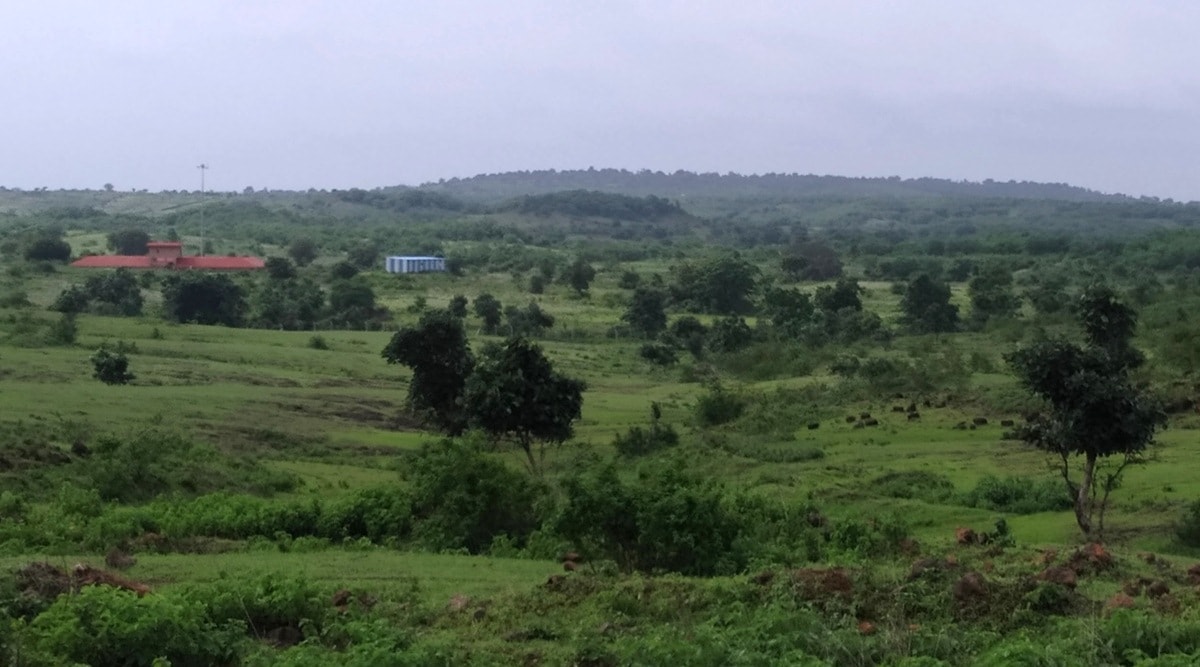 The LIGO-India site office (red roof), the only building present at the site. Civil construction works are yet to commence at the site. (Express photo by Anjali Marar)
The LIGO-India site office (red roof), the only building present at the site. Civil construction works are yet to commence at the site. (Express photo by Anjali Marar)
Those associated with the project say the observatory will produce a minefield of data which will be useful for astronomy and astrophysics researchers globally.
For those in Hingoli, the immediate benefits are mainly in the form of a few low-end jobs. Like Chandeshwar Swami, who has never held a full-time job in the past and is now a security guard at the site. Many others have found employment as drivers, cooks and guest house personnel, among others.
At any given time, an estimated 50-100 people, including administration, maintenance and other support staff (excluding researchers), would be required to work at the site for the smooth operations of the observatory.
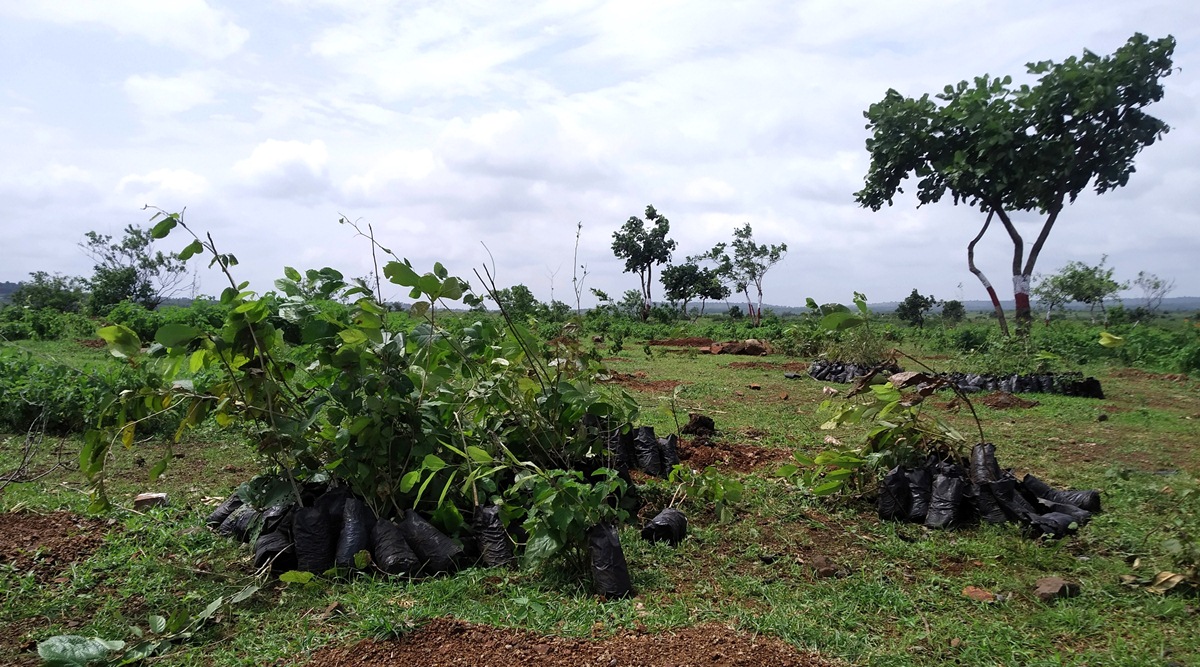 A total 18,887 trees of sesame, jamun, gooseberry, tamarind, etc., will be planted on 17 hectares near the site, earmarked under the afforestation drive aimed to retain the site’s biodiversity. (Express photo by Anjali Marar)
A total 18,887 trees of sesame, jamun, gooseberry, tamarind, etc., will be planted on 17 hectares near the site, earmarked under the afforestation drive aimed to retain the site’s biodiversity. (Express photo by Anjali Marar)
But there is promise for the future. Teachers in schools in the Marathwada region speak about a sudden interest in astronomy among the students. To feed this new curiosity, about 80 teachers from Zila Parishad schools in the region have been conducting an annual exam on astronomy for students in Classes 5 to 10.
“Students are encouraged to take this exam. On National Science Day every year, toppers of this exam are selected for an educational tour of IUCAA (in Pune),” says Nagesh Waikar, a high school science teacher at Shivneri High School, Jawla Bajar, in Hingoli.
Some of the teachers have also curated a bilingual book, in Marathi and English, on astronomy.
“In addition, there are regular hands-on activities in astronomy in which students are engaged. Students here can now make telescopes using local stationary, and are often engaged in various solar experiments and measurements. We are now reaping the benefits of the science outreach sessions conducted by IUCAA,” says Waikar, who has taught science for 22 years and is a member of the Hingoli Astronomy Society.
On July 14, when Chandrayaan-3 lifted off from Sriharikota, among those in the visitors gallery who cheered were a group of students from some of these schools in Marathwada, including Hingoli.







